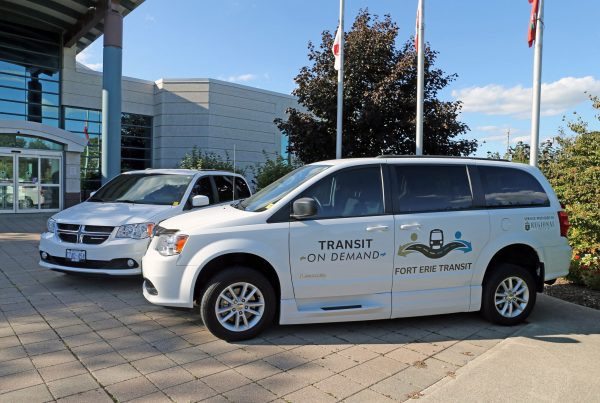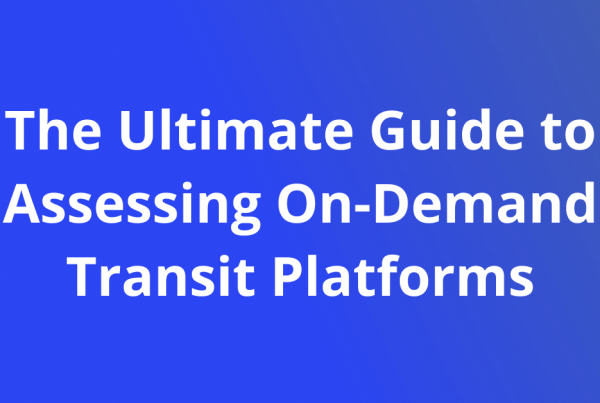Perhaps the biggest challenge in running a traditionally-scheduled bus service in a rural or semi-rural area is the cost required to provide adequate service. In regions with less dense populations, bus lines with acceptable service level are almost always too expensive for taxpayers, if it is a public service. A bus service with an acceptable cost structure for taxpayers is generally not useful; at best, it tends to be merely adequate for areas where the population is more concentrated, and totally useless for areas with lower population density.
To keep costs at acceptable levels, either the operator provides as many buses to the main routes and make the majority of riders happy, but forces unacceptably long ride-times or time between buses for the other riders; or, provides acceptable ride-time for the minority of riders but fewer buses for the majority when they are needed most.
This is not only a challenge for rural and semi-rural bus operations, but also an issue in large metropolitan areas. It is very common to ride buses for a long time to reach anywhere from a sparser populated area, or to wait for a long time for a bus not completely full in a densely populated area during peak hours.
For cities with larger populations, the simplest way to moderate this mismatch is by providing as many buses as possible to the denser areas while reducing ride-time for passengers in lesser-populated areas. However, this results in a compromise of service quality, leaving few passengers satisfied with their overall travel times. If this moderation of the mismatch is handled well, the riders will accept it as a fact of life. For a rural or semi-rural area, it might not be possible for this compromise without costs rising out of control.
However, a purely scheduled bus service system was designed in an era when people first started using public transit, which lacked the technological capabilities available now. No longer are transit services only reliant on communications between the bus driver and the service headquarters, and limited to inspectors at certain fixed points along the bus routes. In addition, changing the bus schedule for a fleet is no longer an extended exercise taking many months to implement (changing the signs, printed materials, web sites, etc.). Now, as communication can be low-cost and constant between the bus driver and the headquarters, it is possible to have on-demand bus services. However, a purely on-demand bus service is also too expensive. It becomes more akin to a taxi service, requiring a much larger fleet of vehicles generally the size of a private car. From the cost perspective, this is not an acceptable solution.
The solution to the mismatch of frequency versus ride-time is a hybrid scheduled and on-demand bus service leveraging communication and optimization technologies. The communication technologies required are readily available, based around internet-connected tablets on the buses, and web technologies for the dispatch centre. Pantonium provides the optimization technology through their custom transportation management algorithms.
A simple example will be given here; it is not meant to show how to convert an existing bus service into using this solution. Instead, a simple scenario is described in order to highlight some of the benefits of the solution.
Consider a fictional town called Haven-on-the-lake. It has grown recently to have a modest population with a small town-centre. Through a decree of a higher-level of government, it is now mandated with providing public services to a much larger surrounding area. For the province of Ontario in Canada, this actually happened in more than a few towns within the last five years.
This town never had a bus service, as the few streets it had did not warrant a bus service. Therefore, it did not have a mandate to provide any kind of transport service to the surrounding area. Using the vehicle fleet management software of Pantonium, the town can proceed to provide a bus service both efficient and cost-effective.
After in-depth demand analysis, the town buys 10 buses, assuming there will always be at least eight of them in service. Through the demand analysis, it is determined for the main arteries, where 80% of all demands come from, six of the buses will be running more or less continuous loops during high-demand periods of weekdays. It is assumed they will be running at near-to-full capacity during the high-demand periods of the weekdays. Two buses will run the optimized on-demand portion of the bus service.
A rider logs on to the bus service website, or calls in to the service centre asking for a ride. The rider provides the origin and destination of the ride, along with the approximate time of arrival expected for the pickup. The rider understands the following: a minimum wait time of 30 minutes is expected before the bus will arrive at the latest bus stop; the bus will wait for two minutes before departing without the rider, and; the rider is charged the fees for the rider for the no-shows. The transportation management system can also provide a notification of an estimated time of arrival within 10 minutes.
The rider is also allowed to enter a ride request for the future. In this case, an alert will be sent one day before the ride to confirm the ride. As well, the rider will be notified again for the pickup 10 minutes before the requested time. Notifications are sent through either email or text-messaging or voice to the riders depending on their preference.
Once the ride is entered into the Pantonium system, the ride is analyzed to determine how it should be serviced ensuring all the constraints are met in an efficient manner using the Pantonium’S optimization technology. The buses currently on the road and the buses to go on the road are all considered in the calculation, to find the most cost-effective but service-level compliant way to service all the rides in the system.
Part 2 of this analysis will continue in our next blog post. For more information, please feel free to email us at info@pantonium.com. Thanks for reading so far!




